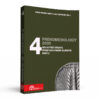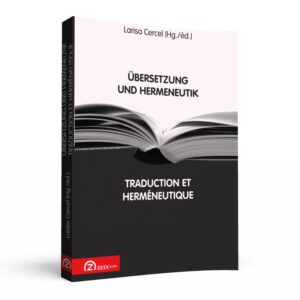Phenomenology 2005 is a very large publication, a total of over 4000 pages. There are 5 volumes (one for each geographical area, e.g. Asia / Latin America / Euro-Mediterranean Area / Northern Europe / North America ). Each of the 5 volumes comes in two parts. Thus, Phenomenology 2005 runs across 10 volumes, each can be ordered separately.
The two volumes of essays coming from Europe – the Northern as well as the Southern part including the whole Mediterranean area – relate to practically all the fields of today’s ongoing phenomenological research. They present a general idea of how phenomenologists from this area today confront the “classical” questions of phenomenology and show how new themes and modes of inquiry have been opened. A large part of the essays deal with the central questions of the phenomenology, such as world, consciousness, ego, language, truth, epochē, phenomenality, body, alterity, attention, affection, and praxis, but also with fresh and provocative topics, such as dance, border experiences, violence, and biological objects. The main figures of the phenomenological movement have, of course, a privileged place. In the order of the frequency of occurrences, they are Husserl, Merleau-Ponty, Heidegger, Schutz, Gurwitsch, Patocka, Levinas, Michel Henry, Ricoeur, Fink, Rombach, Anders, Noica, and Dragomir. There are important debates between phenomenology and representatives of other philosophical schools and the deeper philosophical tradition from Plato and Kant to Wittgenstein, Derrida, Foucault, and Adorno. Other essays shed light on the fruitful relation of phenomenology with researches in sciences (ethno-methodology, cognitive sciences, Gestaltpsychologie) or the arts (painting, literature, and architecture). Finally, some of the essays document the cultural and personal milieu in which phenomenology arose, figures such as those of Adolf und Anne Reinach, Edmund und Malvine Husserl, and Edith Stein being brought into the light anew.
TABLE OF CONTENTS
18. Borders of Consciousness in Husserl’s Logical Investigations: Can Husserl’s Concept of Consciousness Serve as a Starting Point for the Development of a Theory of Not-Conscious?
— Andrzej Leder
19. Terms Denoting Natural Kinds: Prototype’s Effect and Consciousness
— Marek Maciejczak
20. Plato, Husserl, and Theistic Intentionality
— B. M. Mezei
21. Experience and Fictions: Stream of Consciousness and Hypertrophy of Ego
— Victor Molchanov
22. L’ouverture du champs phénoménal : la donation ou l’interprétation ? Sur le problème de l’apparaître comme tel chez Jan Patočka
— Karel Novotný
23. A Nonrepresentationalist Approach to Phenomenal Consciousness
— Peter Reynaert
24. Urpraxis der Epochē
— Hans Rainer Sepp
25. Miteinandersein und generative Erfahrung: philosophischanthropologische Implikationen der Fundamentalontologie Heideggers und der Kosmologie Finks
— Tatiana Shchyttsova
26. Versuch einer kritischen Phänomenologie: Vom produzierten Körper (Foucault) zum sich konstituierenden Leib (Merleau-Ponty) und zurück
— Olga Shparaga
27. The Many Faces of Violence. A Phenomenological Inquiry
— Michael Staudigl
28. Das Sichtbare und das Unsichtbare: Zu einer schwierigen Verhältnisbestimmung in Merleau-Pontys Spätwerk
— Silvia Stoller
29. Perceiving the Other: Husserl and Merleau-Ponty on the Genesis of Intersubjectivity
— Joona Taipale
30. Der symbolische Stifter Gott und das Phänomen der Liebe in Kleists „Amphitryon“
— Jürgen Trinks
31. Die zwei Dimensionen des Sinnes
— Tamás Ullmann
32. Erlebnis und Gelassenheit. Die heutige Welt aus radikal phänomenologischer Sicht
— Gerard Visser
33. „Der liebe Meister“ – Edith Stein über Edmund und Malvine Husserl
— Thomas Vongehr
34. Anders’ Heidegger – Heidegger anders — Lukas Marcel Vosicky
Notes on Contributors
Chronicle of Phenomenological Organizations in Euro-Mediterranea Area
ISBN: 978-973-88633-7-8






